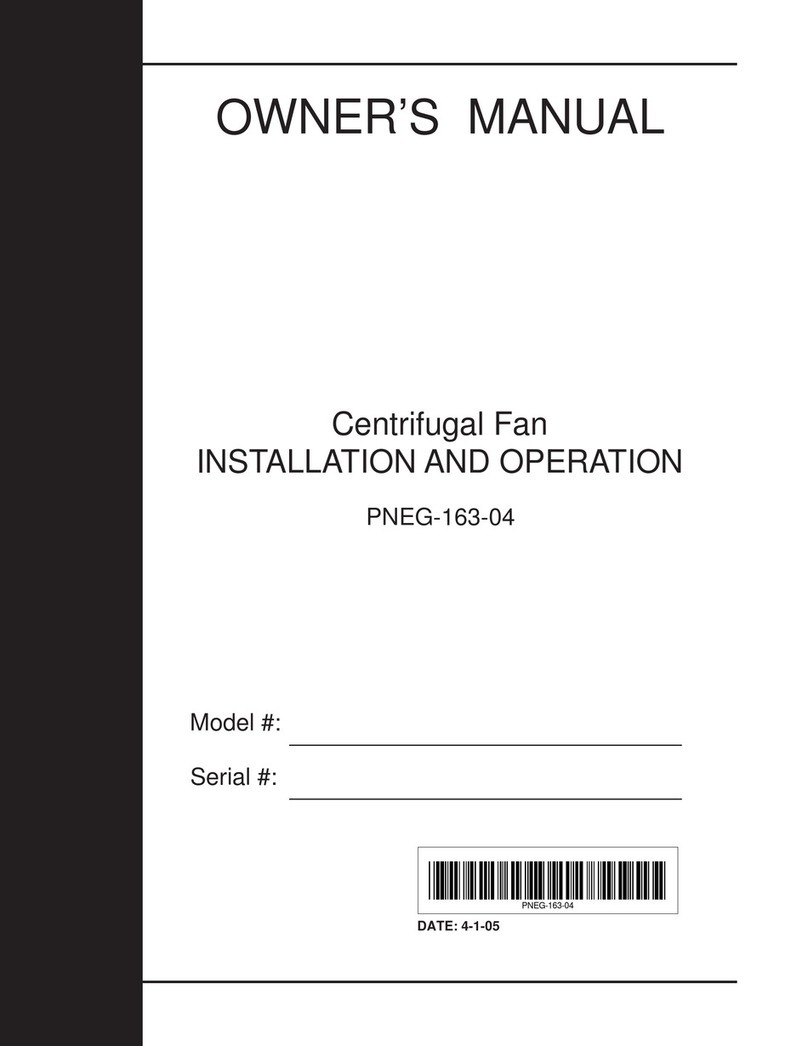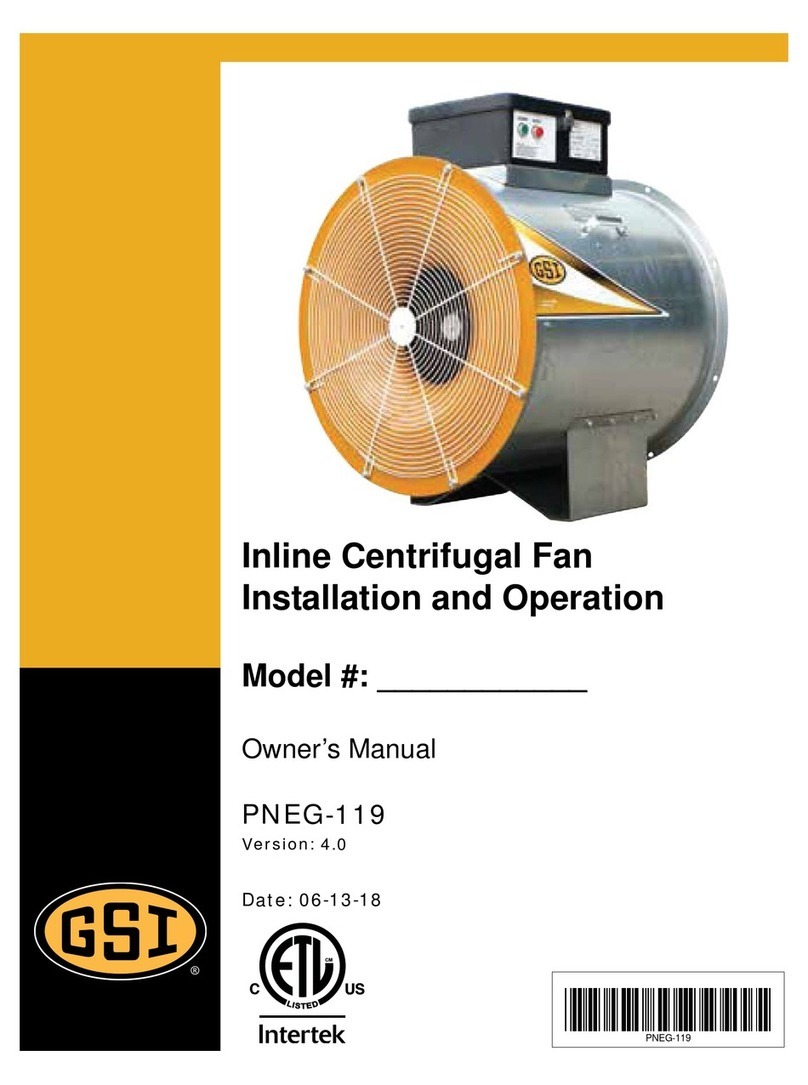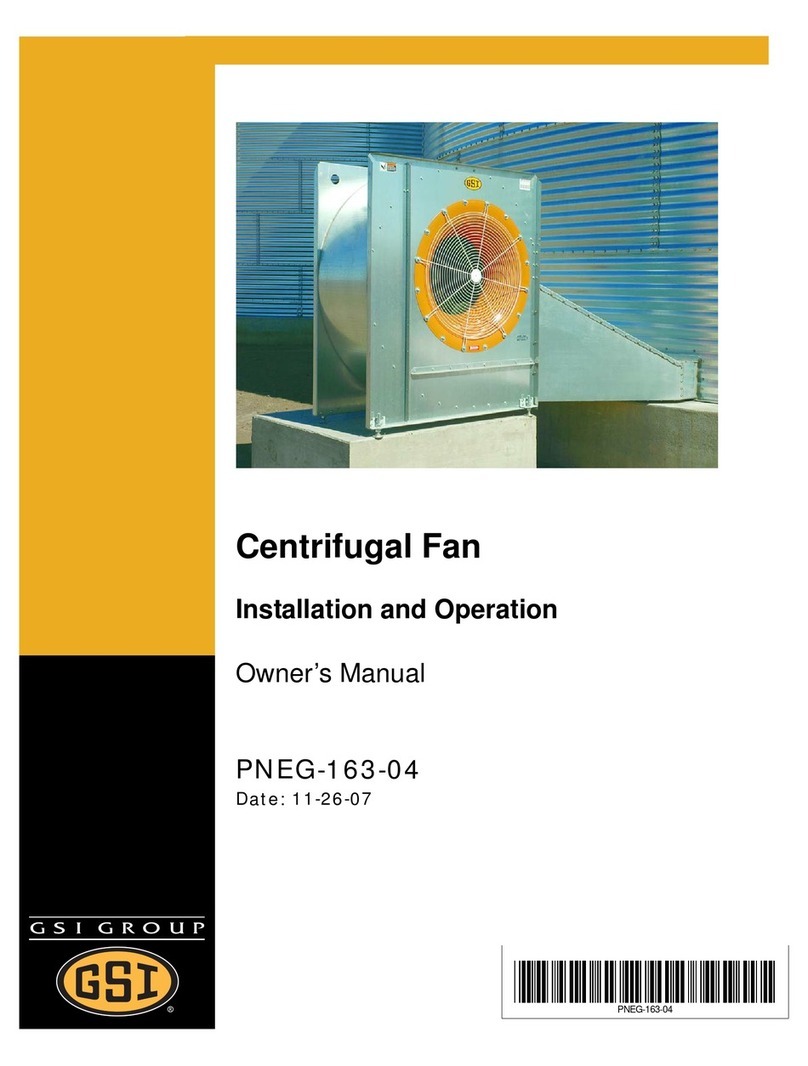
4
Roof Exhaust Fan
ROOF WARNING, OPERATION & SAFETY
ROOF DAMAGE WARNING AND DISCLAIMER
WARNING! BE ALERT!
Personnel operating or working
around electric fans should read this
manual. This manual must be
delivered with the equipment to its
owner. Failure to read this manual
and its safety instructions is a misuse
of the equipment.
The symbol shown is used to call
yourattentiontoinstructionscon-
cerning your personal safety.
Watch for this symbol; it points
out important safety precautions.
It means "ATTENTION",
"WARNING", "CAUTION",and
"DANGER". Read the message
and be cautious to the possibil-
ity of personal injury or death.
SAFETY ALERT SYMBOL
ThankyouforchoosingaGSI product. It is designed
to give excellent performance and service for many
years.
This manual describes the operation of the GSI
Roof Exhaust Fan. It is designed to take in-bin air
and expel it to the outside.
The principal concern of the GSI Group, Inc.
("GSI") is your safety and the safety of others as-
sociated with grain handling equipment. This
y to know what requirements, hazards and precau-
tions exist, and to inform all personnel associated
with the equipment, or who are in the area. Avoid
any alterations to the equipment. Such alterations
may produce a very dangerous situation, where se-
rious injury or death may occur.
GSI DOES NOT WARRANT ANY ROOF DAMAGE
CAUSED BYEXCESSIVE VACUUM OR INTERNAL
PRESSURE FROM FANS OR OTHER AIR MOVING
SYSTEMS. ADEQUATE VENTILATION AND/OR
"MAKEUP AIR" DEVICES SHOULD BE PROVIDED
FOR ALL POWERED AIR HANDLING SYSTEMS.
GSIDOESNOTRECOMMENDTHEUSEOFDOWN-
WARD FLOWSYSTEMS(SUCTION). SEVERE ROOF
DAMAGE CAN RESULT FROM ANY BLOCKAGE
OFAIRPASSAGES.RUNNINGFANSDURINGHIGH
HUMIDITY/COLD WEATHER CONDITIONS CAN
CAUSE AIR EXHAUST OR INTAKE PORTS TO
FREEZE.
ROOF EXHAUSTER FAN OPERATION
manual is written to help you understand safe oper-
atingprocedures,andsomeofthe problems that may
be encountered by the operator or other personnel.
Asownerand/oroperator,itisyour responsibilit-
































